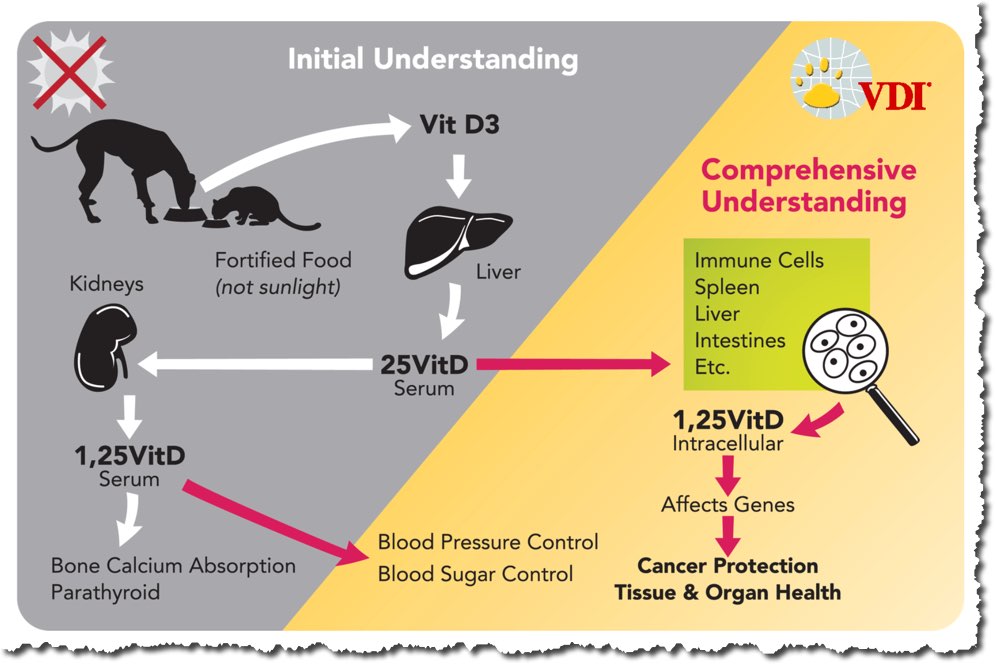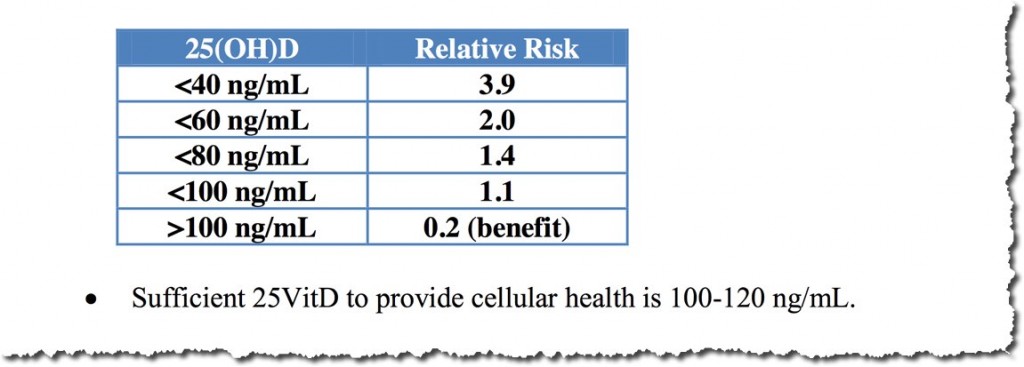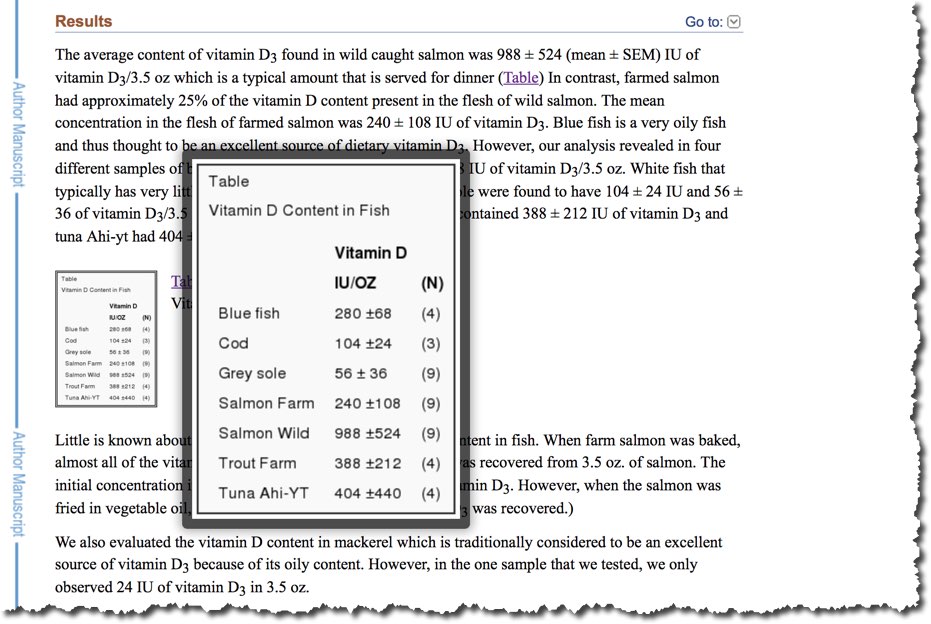Human research is showing many of us don’t get enough vitamin D and that’s bad for our health. And now research is showing the same thing might be happening in our dogs.
In fact, 75% of dogs reportedly don’t have enough vitamin D.
So why is that a problem?
Vitamin D And Your Dog
We humans are lucky … we can get our vitamin D3 not just from diet, but from exposure to the sun.
But dogs and cats are different. They only get insignificant amounts from the sun and must get nearly all of their vitamin D from their diet.
There are two types of vitamin D: vitamin D2 (which primarily comes from plant sources) and vitamin D3 (which is the most usable form for dogs and comes mainly from fatty meats and liver).
When vitamin D3 is eaten by your dog, it needs to be converted into a usable form (which is actually a hormone).
Vitamin D3 is first absorbed through the intestines, then converted in the liver to 25-hydroxyvitamin D (or 25VitD). The active form of vitamin D that the body uses is 1,25-dihydroxyvitamin D, also called calcitriol.

*table source: vdilab.com/page.php
Vitamin D is mainly responsible for the absorption of calcium and phosphorus in the body. This affects a large range of functions in the body.
Vitamin D toxicity is the result of too much vitamin D in the diet. Over the years, many commercial pet foods have added too much vitamin D to their foods and it’s caused illness and even death in the animals eating it.
If there’s too much vitamin D in the diet, then life-threatening levels of calcium (hypercalcemia) and phosphorus can occur. This result is hardening or calcification of body tissues. This often occurs in the kidneys gastrointestinal (GI) tract, the heart and its arteries. Kidney failure can occur within days if vitamin D levels are high enough.
Recently, there’s been a lot of attention to what insufficient vitamin D can do to our dogs. Because vitamin D controls calcium, too little vitamin D can often show up as bone deformities (rickets) and, as researchers are looking at now, even immune system dysfunction.
Here’s a list of research showing some of the diseases that are associated with low serum levels of vitamin D: vdilab.com/pdf/40_VitD%20-%20body%20of%20evidencev7.pdf
You might notice that six of these studies show a link between low serum vitamin D (which is the amount of 25VitD found in the blood of the test animals) and cancer. A lot of researchers have been spending their time on this relationship.
And new research shows that 75% of dogs don’t have enough 25VitD.
Is this the reason why so many dogs are getting cancer these days?
Let’s find out …
The Epidemic Of Low Vitamin D?
Researchers in this study measured 25VitD levels in 320 dogs and put them into three categories: sufficiency (enough vitamin D), insufficiency (not enough vitamin D) and deficiency (very low levels of vitamin D).
They found that most of the dogs didn’t have enough vitamin D and the results are below.
What’s interesting is there’s a really wide range of vitamin D in the blood of dogs eating the exact same foods.
And we’ll talk about that in a bit …

… but in the meantime, let’s figure out how these researchers defined what levels of 25VitD were considered to be sufficient, insufficient or deficient.
Let’s take a closer look at that because I think it’s important …..
A Link Between Vitamin D And Cancer?
In 2014, researchers published a study showing that 2VitD was lower in dogs with various types of cancer than those dogs without. Here’s what the researchers found:

As can be seen, the researchers determined dogs should have 100 to 120 ng/mL 25VtD in their blood to be protected from cancer and other immune-related diseases.
But there’s more to it than that …
The Link To Cancer And Disease?
Now, in my six years of university, I learned a lot about looking for something called Cause And Effect when I examine research.
The key part of cause and effect is proving the effects seen in the experiment happened after the cause.
Cause and effect is one of the most commonly misunderstood concepts in science and is often misused by lawyers, the media, politicians and even scientists themselves, in an attempt to add legitimacy to research
In the case of the above study, the researchers would have to show that low 25VitD actually caused cancer.
But this isn’t the case …
… there’s merely an association.
The above study means we only know more dogs with cancer have lower 25-VitD than dogs without. It doesn’t tell us that low levels of 25VitD can cause an increased risk of cancer.
In fact, it could mean that cancer (and other disease) reduces the dog’s ability to make 25-VitD from dietary vitamin D.
Here’s a study that might actually show this …
In 2004, researchers measured 25VitD in dogs with lymphoma (a form of cancer), hyperparathyroidism and kidney failure. What they found was the dogs with these diseases had lower levels of 25VitD than the healthy control dogs.
Now here’s the important part …
As the diagram at the start of the article shows, 25VitD is just a precursor to the usable, active form of vitamin D, called 1,25-dihydroxycholecalciferol.
Scientists can’t measure this important form of vitamin D … they can only measure its precursor – 25VitD.
Why is it important to know this?
Because in this study, 1,25-dihydroxycholecalciferol wasn’t significantly different between the sick dogs and the healthy dogs.
So how can the researchers claim that low levels of vitamin D can put dogs at risk for cancer when their usable form of 1,25-dihydroxycholecalciferol is identical to healthy dogs?
The Chicken Or The Egg …
Here’s another confound …
A different set of researchers published a study in the 2011 British Journal of Nutrition, showing a relationship between serum 25VitD in dogs and mast cell tumors. They found Labradors with mast cell tumors had less 25VitD than Labradors without tumors.
What they did next is very important …
… they looked at the diets the dogs were eating.
What they found was the Labradors with cancer were getting just as much vitamin D in their diets as the dogs without.
So if 25VitD doesn’t seem to be tightly related to dietary vitamin D, and the usable form of vitamin D, 1,25-dihydroxycholecalciferol, is the same in both healthy dogs and those with cancer and other diseases, how can we conclude that dogs need more vitamin D in their diets or more 25VitD in their blood?
Right now, there’s no way to prove that increasing vitamin D can reduce the risk of cancer or other diseases (although for now, it looks like there may be some evidence that cancer can reduce the dog’s ability to produce 25VtD).
Other Factors At Play
Should we pay attention to the low levels of 25VitD we see in dogs today?
I think we should because human research is showing a similar association between vitamin D and cancer.
They’re not yet finding a cause and effect relationship, but it’s worth paying attention to.
The low levels of 25VitD in our dogs also reflects the state of the world they live in (and us too).
Here are some other factors that are known to decrease the ability to convert dietary vitamin D to 25-VitD:
- Polyunsaturated fats can decrease the bioavailability of vitamin D
- Fluoride (which is present in many pet foods and water supplies) decreases magnesium, which is an essential cofactor for vitamin D
- Strong magnetic fields can reduce vitamin D levels
- PCBs increase the risk of deficiency by 3%
- Roundup (glyphosate, which is present in foods and the environment) decreases vitamin D
- Flame retardants (which are 10 times higher in dogs than humans) inactivate vitamin D
- Low magnesium in foods
- Spay/Neuter (spayed females have 10% less 25VitD than intact females and neutered males have 30% less than intact males)
- Kidney disease (prevents the conversion of 25VitD to the usable form of vitamin D)
- Exposure to DDT and other pesticides
- Certain drugs (as well as St Johns wort and mineral oil) can consume or block vitamin D
Most dogs today are going to be affected by at least two or three of these factors … at minimum.
So what does this mean?
Is There Really A Vitamin D Problem In Dogs?
Today, we’re faced with research showing us that dogs with low levels of 25VitD might be at risk for cancer and other diseases.
So researchers and vets are now telling us dogs should be getting more vitamin D in their diets.
And that makes sense …
… because here’s a problem our dogs need to overcome …

In the last 40 years, the food our dogs eat contains less and less vitamin D.
That’s definitely a problem … especially when we know that spay/neuter and toxins in their food and environment also decrease the amount of vitamin D they have available!
Unlike dogs, cows, chickens and the other animals they eat can manufacture vitamin D from exposure to the sun. But most of these animals are raised in dark buildings. And thanks to over-farming, pesticides and GMO foods, the foods they eat are also less nutritious.
As you can see, there’s less vitamin D in our dogs’ food than there used to be. So we need to work hard to make sure our dogs are getting enough.
But the million dollar question is, how much is enough?
How Much Is Enough?
There’s the rub …
The USDA is responsible for testing foods for vitamin D content (and other micronutrients). But vitamin D is really, really difficult to test for … so the data is really lacking.
On the other hand, testing our dogs for the presence of vitamin D is also pretty hard.
We can only measure 25VitD, which is just the precursor to the important form of vitamin D, called 1,25-dihydroxycholecalciferol.
So we really don’t know how much vitamin D should be in the foods dogs are eating (because the USDA isn’t measuring the amounts found in the wild prey our dogs’ ancestors ate, and they aren’t doing a great job of measuring the factory farmed animals they eat today either).
We don’t know what the optimal amount should be in their blood.
And even if we did, we can only measure the precursor, not the usable form of vitamin D.
If we’re feeding our dogs kibble, then we have to rely on AAFCO (Association of American Feed Control Officials) to tell us how much vitamin D should be in the food.
But AAFCO standards don’t apply well to those of us who are feeding fresh, whole foods. And researchers think they’re not high enough to protect our dogs from disease.
What We Do Know
What’s really interesting is that the researchers measuring the 25VitD in dogs found that dogs who were supplemented with salmon oil had significantly higher 25VitD than dogs receiving other supplements thought to contain vitamin D like other fish oils.
Traditionally, it was thought that all fish and fish oils were high in vitamin D. But a recent study shows this isn’t necessarily the case.
In this study, they found that salmon (not including farmed salmon) had a lot more vitamin D3 content than other fish …
… like a LOT more!

So if you’re worried about the amount of vitamin D your dog is getting, then adding salmon to his diet is probably a reasonable plan.
If you’re feeding a fresh, whole diet, then you would need 125 IU of vitamin D per 1,000 calories of food at minimum and 750 IU maximum, according to AAFCO.
So a typically active 33 pound dog would need between 125 and 750 IU of vitamin D in his diet daily.
As you can see above, an ounce of wild salmon every day or two would meet this requirement, even if his diet contained no vitamin D.
Cod liver oil is also an excellent source of vitamin D … it’s the best source we know of. But because it’s such a potent source, you have to worry about too much vitamin D (and too much vitamin A).
Just read the label and make sure your dog gets the minimum 125 IU per day (for every 33 pounds of dog).
How Do You Know If Your Dog Has Enough Vitamin D?
There’s no question the research showing an association between cancer and 25VitD is worth looking at. And we know your dog probably isn’t getting enough.
But how can you tell for sure?
The good news is you can do this by requesting this test from VDI Labs at your vet clinic. It typically costs less than $100 and it’s just a simple blood test.
But if you test your dog and decide to give him a vitamin D supplement that isn’t in a whole food form like salmon, then you’re probably not doing your dog any favors …
I need to warn you about something before you give your dog a vitamin D pill to reduce his risk of cancer.
The Beta Carotene Study
In the 90s, researchers discovered that people with high blood levels of beta-carotene and retinol (vitamin A) had a lower risk of lung cancer, other cancers and death.
Sound familiar?
So they decided to start a study and they did it on people who were at risk for lung cancer, like smokers and people who worked with asbestos.
They then gave these people 30 mg of beta-carotene a day and 25,000 IU of retinol daily, thinking this would reduce their risk of cancer.
But the results shocked the researchers …
… the incidence of lung cancer went up 28%, the incidence of death went up 17% and there was a higher rate of death from heart disease compared to the placebo group.
The increased risk of cancer and death was so significant, they stopped the study early and took the people off the vitamin A.
And while the risk of heart disease went down after the people stopped taking the vitamin A, the risk of cancer remained five years after the study was stopped.
What’s the moral of this story?
We don’t know all that much about how vitamins and their cofactors function in the body.
What we’re starting to find out is that synthetic vitamins and minerals don’t act in the body the way we think they should.
They’re not as predictable as food-based supplements because they can be missing important cofactors or phytonutrients that help regulate them.
So if you want to boost the amount of vitamin D your dog is getting – and you probably should – then it’s important to do this with food, not vitamin D pills.
This last study will help you see this more clearly …
One More Study
We know that vitamin D deficiency causes rickets, a malformation in bone development.
Researchers looked at how vitamin D pills could help this disease. So they fed female rats a diet that was deficient in vitamin D … and many of their offspring had abnormal bone development (which is what rickets is).
So they fed synthetic vitamin D to the female rats and looked at their next lot of offspring … and one third of them still had rickets.
Next, the scientists fed the rats liver (which is a whole food source of vitamin D). Now, 100% of the offspring were normal.
What To Do?
So think about the food your dog eats …
… if he eats kibble, or if he eats a raw food with synthetic vitamin D (it will say vitamin D on the label), then we know he might not be getting enough.
Keep in mind that even raw foods can contain synthetic vitamin D. If it says vitamin D, it’s not natural.

And remember, if food manufacturers mess up and put just a little bit more vitamin D in the food, your dog can suffer kidney disease or failure (and lots of commercial foods have killed dogs due to vitamin D toxicity).
So here’s the best way I see to make sure your dog is getting enough vitamin D (and other important vitamins) in his diet and his body.
- Feed your dog wild prey animals whenever you can. They will have more vitamin D content than their domestic counterparts.
- Feed your dog grass-fed, pastured animals. They’ll have more vitamin D than animals raised indoors.
- Feed organic animals whenever you can. They’ll be less likely to be eating foods with glyphosate and other nutrient robbing ingredients.
- Don’t feed commercial foods with synthetic (fake) vitamin D. If it says vitamin D on the label, it’s not vitamin D … it’s a fake, chemical isolate and won’t behave the same way (and can harm your dog if there’s too much).
- Supplement your dog’s diet with either salmon or cod liver oil.
- Test your dog for vitamin D deficiency if you can’t do all of the above.













